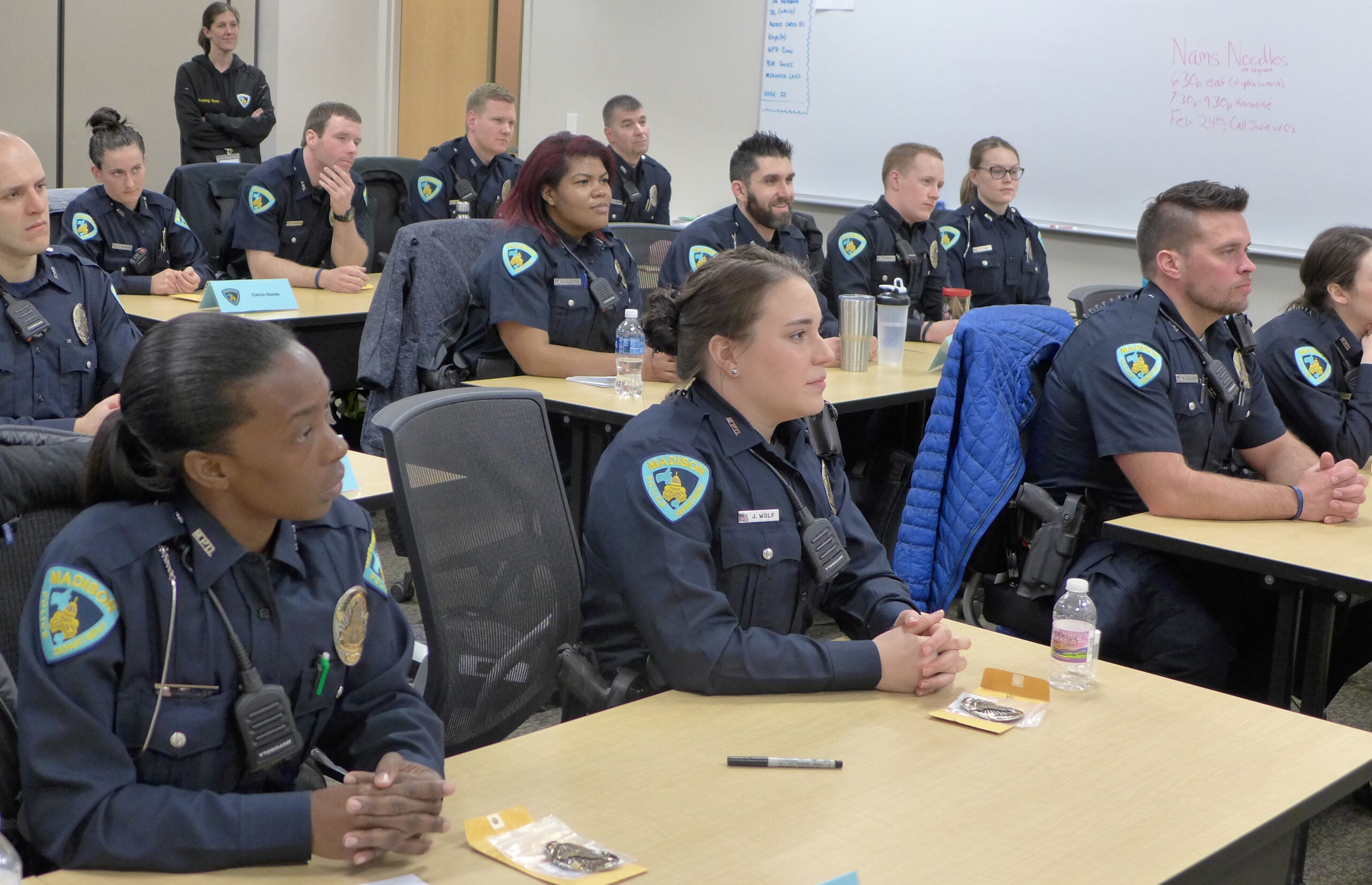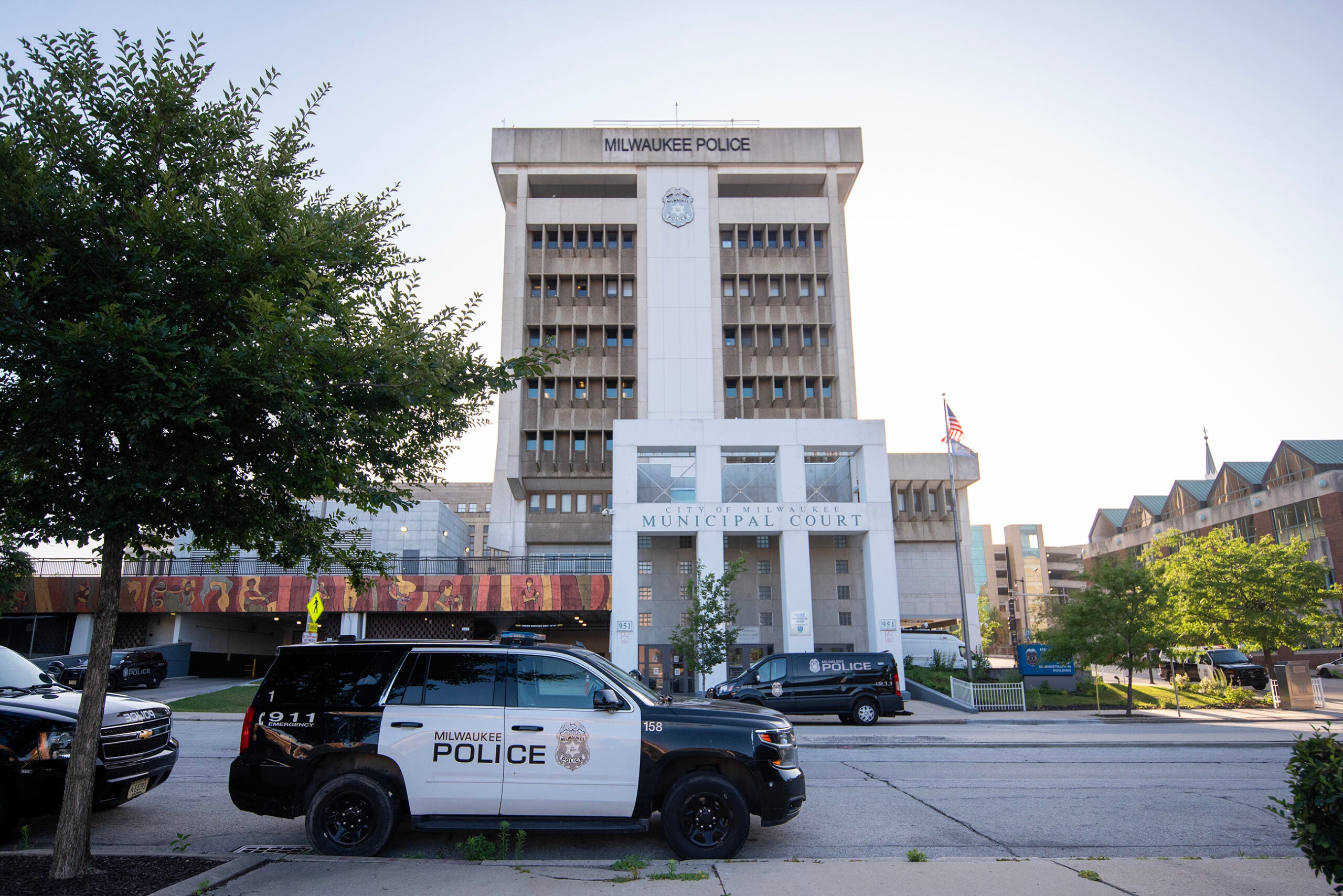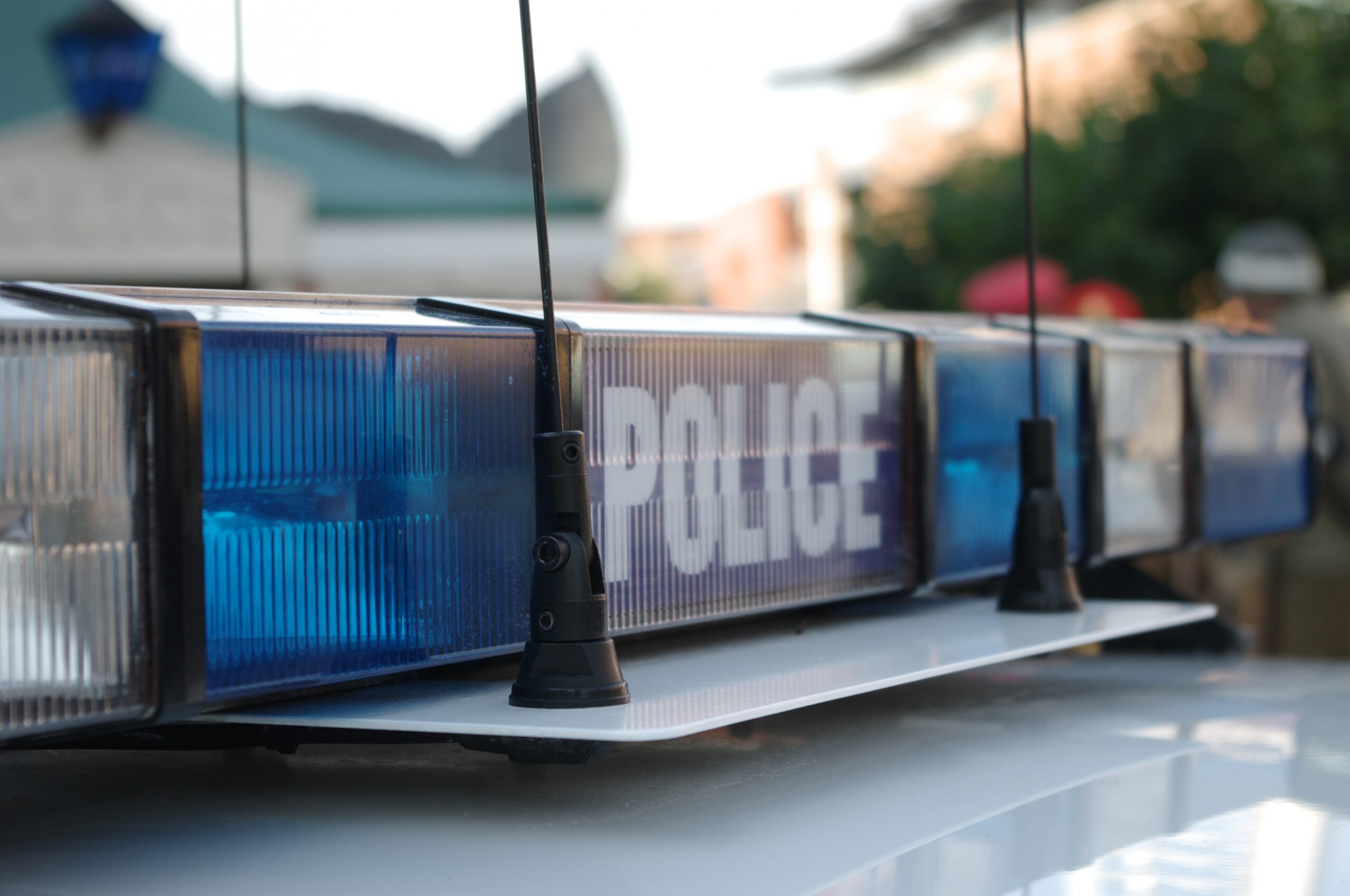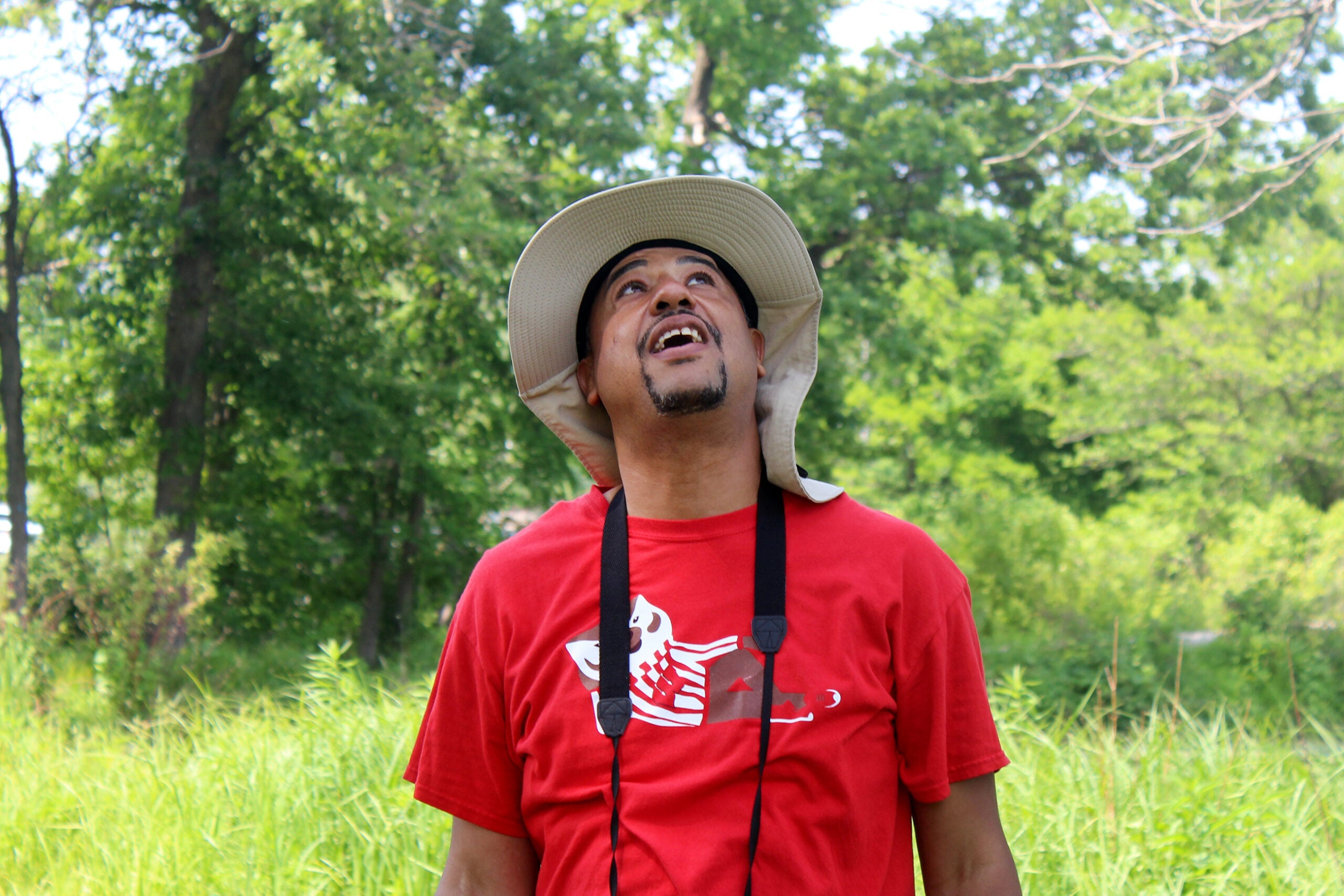Policing is an issue that divides Americans.
Some people don’t trust police, and fear that the officers who are sworn to protect and serve might actually harm them. Others think police are under attack, and maybe even deserve hate crime protection.
So why, with all of this disagreement, would anyone want to become a police officer right now?
News with a little more humanity
WPR’s “Wisconsin Today” newsletter keeps you connected to the state you love without feeling overwhelmed. No paywall. No agenda. No corporate filter.
On the first day of the Madison Police Department training academy in September 2016, 23 nervous recruits, dressed in suits and ties, sat at their desks.
They were greeted by Lt. Marianne Flynn-Statz, who helps run the academy. She welcomed them with a smile, but quickly switched to a serious message.
Madison Police recruits load rifle magazines before a training exercise.Bridgit Bowden/WPR
“You’re coming into a profession that’s under fire like it never has been at any other time,” she said.
Once they put on the uniform, Flynn-Statz said, they’re going to be viewed differently.
“This uniform instills fear in many people, abject fear,” she said. “So we have to be very cognizant of that.The uniform can speak for itself.”
The department received 681 applications for this class, down 22 percent from the year before.
Of the 23 recruits who were chosen, nearly 70 percent are white, which is slightly less than Madison as a whole. Ten are women, five are older than age 30, and 17 of them have at least a bachelor’s degree.
Ruben Gonzalez, one of the youngest recruits, graduated from the University of Wisconsin-Madison last year. His older brother is a police officer in Chicago.
“He patrolled my neighborhood and he would stop by and eat lunch and his partners would stop by and eat lunch at my house,” Gonzalez said. “So I grew up around them.”
But unlike some of his classmates, Gonzalez didn’t always want to be a police officer.
“I would go outside and see cops treat my friends or the group that I was with unfairly,” he said. “Just because of the neighborhood that we grew up in.”
But when he was in college studying social work, Gonzalez met Madison Police Chief Mike Koval, who changed his mind. Gonzalez knew that joining the force was exactly what he wanted to do with his social work degree. He wants to be a change agent, he said.
“There’s no article that’s going to be like ‘Ruben Gonzalez changes the view of like, all Americans on police,’” he said. “But, I feel like this department could change the view of the people in Madison.”
Hear More From Ruben Gonzalez
A Divided Community
Madison residents, though, are divided on this issue. On the one hand there are citizens like David Glomp, who printed and distributed yard signs that say, “We Support Our Madison Police,” to show the police he cares.
“As much as they’re being possibly maligned by individuals and groups, that we think they’re doing a good job, and we’d like to see them continue to do that and do it better,” Glomp said.
On the other hand, some people just don’t trust the police, like the boys who meet every week in a community room in Madison’s Allied Drive neighborhood.
Katy Farrens has lived in the area for 14 years. When her son Kieshawn was 11 years old, she thought the boys in her neighborhood needed something positive to do. So she started a group called Brotherhood.
“One of my focuses of the group was to build better relationships with the police,” Farrens said. “Because the boys had such negative thoughts about the police just because of their life and what they’ve experienced.”
Still, Kieshawn, now 17, doesn’t like law enforcement. Once he was stopped by the police while he was waiting for the bus, he said. He said he was taken in and fingerprinted.
“It just made me not like the police because, like, they stopped me for no reason,” he said. “Every time I see them I feel more scared than protected.”
The boys in the Brotherhood group are all high school-age, and they’re all black. All of them share Kieshawn’s perspective on police. They make that very clear.
Hear More From Katy Farrens
Recruit Clare Gloede listens to instructions at the Dane County Law Enforcement Training Center shooting range. Bridgit Bowden/WPR
Use Of Force
No matter how you look at it, one thing’s for sure — the Madison Police Department has been heavily scrutinized, in part because of its use of force. This includes tactics like punching or kicking, using non-lethal weapons like Tasers and, in the most extreme cases, firearms.
On the first day of firearms class, the Madison recruits lined up in the training center’s shooting range, drawing their new handguns out of their holsters, and waiting for the cue. Then, they fired.
They’re not just learning how to shoot guns, they’re learning how to make decisions.
Training officer Chris Masterson said it can be really tough to teach split-second decision making, and “they have to experience a lot of different things to really get there.”
First, they start in the classroom. In one exercise, the recruits watch a few videos of police using force. Then, they vote on whether they think the use of force was justified. Sometimes they all agree. Sometimes they’re split 50-50. Sometimes, it’s one against the rest.
Recruits practice ground fighting drills at the Madison Police Training Center. Bridgit Bowden/WPR
Lt. Tim Patton was the department’s lead recruiter, up until few months ago. He says a lot of the new hires come in expecting to learn exactly when it’s OK to use force and when it’s not. But, it’s not that simple, he said.
“What we all wanted as new recruits, I think we wanted these bright-line rules,” he said. “It just doesn’t work that way.”
The current legal standard for deadly force comes from a 1989 U.S Supreme Court decision that says its use should be objectively reasonable from the perspective of the officer on the scene, and not with the benefit of hindsight.
Patton said it’s really difficult to teach, because it relies on the perception of each individual officer.
“What we see if two human beings will look at the exact same situation and one will say, ‘Yes, I believe that was imminent danger,’ and another one will say, ‘No,’” he said. “And so that is the challenges of training.”
He said he thinks it’s important citizens understand how officers are trained.
“We have to have better conversations to be able to move more quickly when we see something that the community finds unacceptable,” Patton said.
When it comes to regular citizens, few are more educated on use of force than Amelia Royko-Maurer, whose friend and roommate Paul Heenan was killed by a Madison officer.
Recruit Julie Clayton on the first day of firearms training at the Madison Police Training Center. Bridgit Bowden/WPR
Deadly Force
Very early in the morning on Nov. 9, 2012, Amelia was woken up by her dog barking like crazy. She couldn’t find Heenan but could see blue and red lights flashing through the window.
“I see that there is a person laying, you know, near the sidewalk,” she said.
She noticed that the person’s hair was curly, just like Heenan’s. After a while, a detective came in the house and started asking questions.
“In my mind, when I saw that badge, I was like: everything’s going to be OK, they’re going to help us, they’re going to help Paulie.”
Slowly, she began to put the pieces together, and she realized Heenan was shot by an officer, Steve Heimsness.
Heenan was reportedly drunk and scuffled with the officer after trying to enter a neighbor’s house instead of his own.
Recruit Jessica Wolf practices shooting at the Madison Police Training Center. Bridgit Bowden/WPR
Heimsness was cleared of wrongdoing by the Madison Police Department and the Dane County district attorney. He eventually retired.
Royko-Maurer thought the system had failed her friend, and she wanted to take action. She has become one of the department’s most vocal critics, but tries to focus on solutions.
She said she thinks there’s more to learn from Supreme Court decision than just the objective reasonableness standard. She said she hopes the department sees a lesson about the value of life.
“I would hope that a police department that touts itself as one of the best in the nation might take a case law like that and the story and say, ‘What else can we learn from this so we don’t have to find ourselves in these circumstances?’” she said.
Royko-Maurer and a grassroots group she helped start lobbied successfully to change state law to require outside agencies to investigate deaths at the hands of police. The group backed a set of police policy changes through Madison’s city council this year, including some regarding use of force.
Hear Amelia Royko-Maurer’s Story
Recruit Justin Cumley is sprayed in the face with pepper spray as part of a training exercise. Bridgit Bowden/WPR
Pepper Spray
In the academy, the recruits are put on the receiving end of some types of force. They are all pepper sprayed in the face and shot with a Taser.
These are probably the most dreaded days of the whole academy. Pepper spray day was last November, just before Thanksgiving.
One by one the recruits were taken outside and sprayed directly in the face. Then, they had to open their eyes and do a series of tasks: track someone with their gun, put handcuffs on a dummy, find their radio in a pile of stuff and use it to call for help. Only after all of that did they get to wash their eyes and face.
By the end of the day, the air smelled like burnt toast, and everyone, even the spectators were coughing.
A month later, every recruit is shot with an electronic control device, or Taser.
There are two reasons this exercise is included in training. First, the recruits need to fully understand the consequences of the force they’re authorized to use. Second, they need to know what to expect if they are ever accidentally exposed to pepper spray or shot with a Taser while they’re on duty. After the training, they know that they can fight through it, to an extent.
Hear Sounds From Pepper Spray Day
Recruit Stephanie Nelson returns to her squad car during a training exercise. Bridgit Bowden/WPR
Implicit Bias
This year’s class of MPD recruits are entering the field at a time when more and more people are discussing implicit bias and its role in the high-profile killings of African-Americans by officers.
Madison academy classes receive specific training on the subject, including exercises to help them become more aware of their own unconscious biases.They also study a timeline of the often-violent history between police and African-Americans, from the days of slavery, through the Civil Rights era and up to today.
Madison Police recruits, left to right, Nick Pine, Stephanie Nelson, Ray Gillard, Mark Gulden and Lyjya Miles pose during a cultural competence class about Hmong culture.Bridgit Bowden/WPR
Officer Jared Prado is part of a group within MPD that trains officers on implicit bias. He said it’s imperative police learn their history, and not gloss over the ugly parts,
“Our history is something that we have to own,” he said. “It’s hard to do better when we don’t contextualize these relationships that are institutional, historical in nature.”
And that includes not glossing over history that hits close to home. At the very end of class, Prado flashed a date on the projector: March 6, 2015. The day Tony Robinson, an unarmed black teenager, was shot and killed in an apartment on Madison’s east side by city police officer Matt Kenny.
Neighbors called police to report Robinson was acting erratically in the street. The shooting caused days of protest.
Kenny was cleared by an outside investigation and the Dane County district attorney. He is still employed by the department. This February, the Robinson family settled a civil rights lawsuit for $3.3 million.
What many people fear is that implicit bias is a contributing factor in cases like these. According to data analysis by the Washington Post, black Americans are 2.5 times more likely as white Americans to be shot and killed by police officers. Some people think this is because officers are biased against black people without really knowing it.
Recruit Lauren Bucheger practices rifle shooting at the Dane County Law Enforcement Training Center shooting range. Bridgit Bowden/WPR
Officer-Involved Shooting
The Madison Police Department has had eight officer-involved shootings since 2012.
One of the last blocks of training in the academy teaches the recruits what to expect after this happens. So-called “officer-involved critical incidents” can include shootings, in-custody deaths, and serious car crashes that involve squad cars.
The training starts with a scenario: the recruits get a pretend call that there’s an unwanted person in a building. They believe their partner has found the person, and is OK.
As the door opens, they see their partner on the ground in a pool of blood, and the suspect swinging a shovel at their partner’s head.
Every recruit draws their gun and fires multiple rounds.
Training officer Chris Masterson said many of the recruits were very stressed and even felt guilty, even though they knew the scenario was fake.
The next day, they’re interviewed by a real MPD detective and an agent from the state Department of Justice’s Division of Criminal Investigation. Since 2014, state law has required all officer-involved deaths to be investigated by an independent agency, like DCI.
This is separate from the use of force training, where they learn how to decide whether or not to pull the trigger. It’s about what happens after that decision is already made.
Lt. Marianne Flynn-Statz said the goal is to make sure the recruits know how to handle the emotional toll of a shooting.
“It’s likely the most isolating and life-impacting event that they’re ever going to encounter,” she said. “As trainers we have a responsibility to prepare them for that worst day of their life when they’ve had to make a deadly force decision.
But for activist Amelia Royko-Maurer, focusing the training on the officer side isn’t enough.
“If by law they’re not required to think of the person who’s laying on the ground and has a family and loved ones … who will now be in a sort of bottomless falling state of pain, they just should,” she said. “They need to be taught to do that.”
And, she’d like to see more focus on mental wellness for officers, especially those who’ve been involved in a critical incident.
For recruit Nick Cleary, going through this practice scenario helped ease his mind. Cleary was an officer in Fitchburg for seven years before he joined MPD. So, he’s been through training before. But this was the first time he’d been through a scenario like this.
“Say you’re involved in an incident or a shooting or some kind of crash,” he said. “You sit there and rack your brain as to, ‘Oh my gosh, what’s happening next, how is this going to affect me?’”
While he hopes he’ll never be involved in a critical incident, he said it’s helpful to know what will happen.
Recruit Nick Cleary with his wife, Kayleigh, and daughter, Felina. Michelle Stocker/Capital Times
Family Life
A critical incident isn’t the only time an officer could be traumatized by their work. Law enforcement see some really ugly stuff, so it’s important they figure out ways to take care of themselves mentally.
For Cleary, it’s spending time with his family. For as long as his wife Kayleigh has known him, he’s been a police officer. In fact, they actually met when he pulled her over for a broken license plate light. They played the dashcam footage of the stop at their wedding.
But even though she’s used to Nick’s job, Kayleigh says it’s still hard. Especially now that they have a 2-year-old daughter, Felina.
“There’s a baseline layer of worry that doesn’t ever go away, even on off-days. Especially with her,” she said.
She says she wonders how Nick is able to process the less-than-cheery things he sometimes sees at work. According to the National Association of Chiefs of Police, police officers are twice as likely to kill themselves than they are to be killed by a criminal.
Even though Cleary has been an officer for a while, going through the training academy this time around gave him a new sense of purpose for the job. And he was very excited to start field training.
Field training is like a residency for police officers. The recruits start out mostly observing their trainers. By the end of three months, these roles flip, and the recruits become the primary officers.
The class started off with 23 recruits. Twenty-one made it through field training and were given their badges at a graduation ceremony in June 2017.
Cleary was chosen by the class to give a speech.
“We’ve taken this challenge head-on in a time of widespread dissension, criticism and fear,” he told the class. “For that we’ve all taken the road less traveled and will continue to do what’s right in our hearts and our minds.”
Understandably, criticism can have an especially sharp sting when you wear a bulletproof vest to work. Officers sacrifice a lot, and that gives them a huge sense of honor and pride about their work.
For many the road to trusting law enforcement is a long one. But, the officers in this class say they want to make a difference. And they’ll have their chance, one traffic stop, one arrest, one shift at a time.
Wisconsin Public Radio, © Copyright 2025, Board of Regents of the University of Wisconsin System and Wisconsin Educational Communications Board.





















